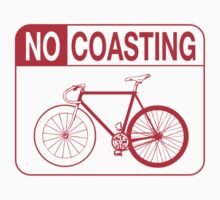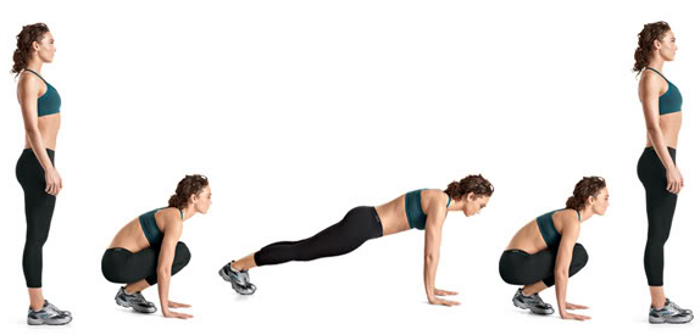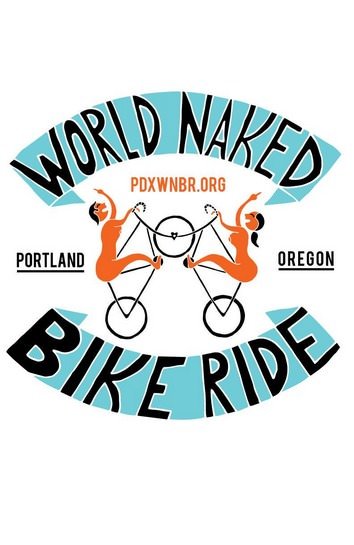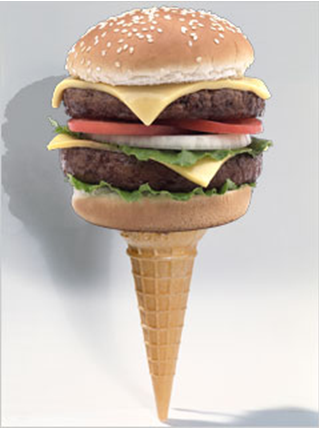I could tell that someone was
staring at me. You know the feeling—even though you can’t actually see their
eyes looking at you, you somehow know they are. And it wasn’t in that flirtatious
kind of way, like when a girl is goggling over a man she finds attractive. No,
this guy was straight-up glaring at me, like when one man wants nothing more
than to hurt another man. I finally gave in and turned my head in his direction.
That’s when he straightened his arm and pointed his index finger at me. “Narc!”
he yelled loudly. “That guy’s a narc!”
“Narc” began as a slang term for a
narcotics officer, presumably someone who is a member of law enforcement, but
it eventually evolved into the more universal meaning of anybody who turns somebody
in for doing something wrong. I wasn’t sure which definition this guy believed me
to be as he yelled into the crowd. Could I be a cop? Sure. I suppose. But
couldn’t anybody be a cop? Though, in my case, it did seem unlikely, seeing
that my hair was long—almost touching my shoulders—and my beard was scraggly.
Not typically what one thinks of when they picture a cop.
Could I be somebody who was going to turn him in for
doing something wrong? Most definitely. But again, couldn’t anybody? I mean,
what distinguishes a “narc” from anybody else? And how could I even know that
he was doing anything wrong? The fact that he was yelling “narc” at someone,
regardless of who they were, was in itself a telltale sign that he was in fact doing something wrong—a clear
admittance on his part.
But back to me—why me? What could have set this guy
off to believe that I was out to get him? I doubt it was my hair or beard. After
all, his wasn’t much different than mine. Could it be my bicycle? But everybody
there had bikes. Perhaps my clothes? No. Impossible. Because I wasn’t wearing
any. Nobody was. In fact, of the thousands of people gathered at the
riverfront, the only people who were
wearing clothes was the man pointing at me and his posse of a half-dozen delinquents
now standing next to him, all of whom were by now convinced that I was a narc—a
bare naked narc.
That was two years ago, and after
that incident—among other reasons—I vowed to never participate in the World
Naked Bike Ride again. But that was two years ago, and a lot can change in two
years. My hair is short now, for one, and my beard isn’t
as scraggly. Plus, I have a girlfriend who wants to do the ride.
2014 is her first year living in the city of Portland and the World Naked Bike
Ride is somewhat of a rite of passage—an initiation of sorts—to becoming a true
“Portlander.” (Whatever that means.) Being the closest to the starting spot, a
group of friends meet at our house beforehand. Our party rolls out wearing
clothes, because a half-dozen naked cyclists in daylight doesn’t go over quite
as well as several thousand in the dark. We ride the two and a half miles to
Normandale Park, where there is absolutely no doubt that we’re at the right
place.
There’s no term for the science of
counting crowds, so I’m going to make one up—crowdology. Now, I’ve never
claimed to be a crowdologist, but from my experience at rock concerts and music
festivals, I would estimate around 10,000 people at the park. To put that in
perspective, that’s about half the amount of spectators that would fit in a professional
basketball arena. This may already seem like a very large number, but when you
add the fact that nearly all of these people are naked, then things suddenly
seem a lot more interesting. If we assume that there are as many males as there
are females, then instead of thinking of the crowd as 10,000 naked people, we
can think of it as 5,000 penises and 10,000 boobs. Which brings us yet to
another new term: Nudistry—the science of counting naked people.
 Though I did not attend Woodstock,
or any of its subsequent anniversary concerts, I can assume that the festivals
had a similar feel to Normandale Park on this warm night in June. Music is
streaming from all directions, body paint is prevalent, and the aroma of
recreational drugs is in the air. And did I mention that everyone is naked. Just
after 9pm, we strip down, the men to nothing, the women in our party, to their
bottoms, and we hop on our bikes and ride. We’re able to start rather close to
the front of the group where a marching band is playing and the streets are
lined with spectators, most of whom seem to be as—or more—excited than those of
us riding. After a slow start, we’re finally on our bikes and pedaling, the
wind blowing through our hair, even those of us wearing helmets—The World Naked
Bike Ride has officially begun.
Though I did not attend Woodstock,
or any of its subsequent anniversary concerts, I can assume that the festivals
had a similar feel to Normandale Park on this warm night in June. Music is
streaming from all directions, body paint is prevalent, and the aroma of
recreational drugs is in the air. And did I mention that everyone is naked. Just
after 9pm, we strip down, the men to nothing, the women in our party, to their
bottoms, and we hop on our bikes and ride. We’re able to start rather close to
the front of the group where a marching band is playing and the streets are
lined with spectators, most of whom seem to be as—or more—excited than those of
us riding. After a slow start, we’re finally on our bikes and pedaling, the
wind blowing through our hair, even those of us wearing helmets—The World Naked
Bike Ride has officially begun.
Though naked bicycle riding has a
long history, the World Naked Bike Ride was conceived in 2004, by Conrad
Schmidt, an activist in Vancouver, Canada, who was the coordinator for the Work
Less Party of British Columbia. The first WNBR featured participation from 28
cities, in 10 countries, on 4 continents. By the turn of the decade, the ride
would expand to 74 cities, in 17 countries. Initially the ride was formed as a
protest against oil dependency, though it eventually shifted focus to bicycle
advocacy. Apparently, riding naked represents how vulnerable cyclists are on
streets filled with automobiles. Personally, I believe most people are here
just to have a good time, but since it is
a “protest,” it’s entirely legal under our First Amendment rights. The Portland
Police Department even corks traffic at nearly every cross street throughout
the entire route, no doubt pissing off unsuspected drivers who weren’t aware
the ride was taking place. But on the bright side, if you are forced to wait in
your car, what better way to pass time than to watch thousands of naked people
ride by on bikes?

The perturbed drivers blocked by the
cops aren’t the only spectators. Thousands of people come out to watch what I
heard one person refer to as a “freak parade.” Because the meeting point of the
ride was widely announced beforehand, it wasn’t surprising to see a crowd
gathered toward the start, but since the route was a secret, it
was surprising to see how many
spectators still found their way to the sidelines over the course of the next
five or so miles. In past years the ride went through the heart of the city,
passing the bars and clubs downtown, causing crowds of drunkards to whoop and holler
and occasionally throw things. This year the ride took a much more pleasant
route, through what I would refer to as “wealthy” neighborhoods where I even saw
the occasional family outside to watch the festivities. For the handful of
teenage boys I noticed along the route, this appeared—by the looks on their
faces—to be the greatest night of their lives. And when the ride did pass a
handful of bars, they were in the much more cultured districts of town, where
several spectators themselves had no problem stripping down, if only to cheer
us on.

As for the party that I arrived
with, well, it’s very easy to get split up when you’re riding in a group consisting
of thousands of people. My friend Colin immediately disappeared. (Even as I
write this, I have no idea what happened to him.) Kelly, who we all thought
was a bit reserved, has suddenly discovered the art of high-fiving. Before the
ride started she was debating whether or not she was even going to take off her
shirt, let alone her bra. Now, she is completely topless and high-fiving every
spectator she can get her hand on. It’s as if she grew up in a world where
high-fives were forbidden and for the first time in her life she has been
liberated. “You’ve got to try high-fiving,” she says to me. “It’s fun for you,
it’s fun for them, it’s just fun for everybody!”
My girlfriend and her friend are
simply riding, but her friend’s boyfriend possesses a specific skill that just
so happens to come in handy on a night like this. He used to hold the world
record for riding the longest wheelie on a bicycle and is not shy about showing
off his talent. I watch as he rides on one wheel, and then continues to ride,
and ride, and ride. Everybody around us can’t believe what they’re seeing, and
if it isn’t for a steep incline, it seems that he could keep it up forever. Seeing
someone do a wheelie for that long is strange, but seeing someone do a wheelie
for that long while completely naked is even stranger. And that isn’t even close
to being the strangest thing to be seen at the World Naked Bike Ride.

People seem to come out of the
woodwork for events like this and they ride every possible type of bike one
could imagine, and some that you probably couldn’t imagine. Of course there’s
the standard bicycle, and then there’s mini-bikes, swing-bikes, double-decker
bikes, folding bikes, recumbants, tandems, tricycles, quadcycles…you name it,
somebody’s riding it. And then there are those who decorate their bikes, with things
like crazy neon lights or large American flags that flap in the wind behind
them. And then there are those who take it to a whole new level. I saw one
guy riding a bike that looked like a rabbit. And a man on a double-decker
bike that was all lit up to look like Pac-Man, the lights flickering to make it
look as if it was opening and closing its mouth. And my favorite, an old man
with a large lit-up ice cream cone standing on his rear rack, with the words “Free
Licks” painted on his back. And then there’s the participants who don’t even
have bicycles at all—runners, rollerbladers, people confined to wheelchairs,
and skateboarders. Goddamn skateboarders!

We’re almost to the finish—one last
huge descent and we’re home free. We’re going downhill at a pretty good clip
when I see the skateboard rolling across the street. It’s as if time freezes
for a moment and I am a physicist who can calculate the projection of objects
simply by looking at them. It’s going this speed, at that angle, in this
direction—straight towards my girlfriend’s front wheel. My girlfriend, who
until tonight has never ridden a bicycle in the dark, in a group, or naked. By
the time I pull over and look back she is on two feet, her bike straddled
sideways between her legs, the skateboard caught up in the mix. The kid unapologetically
grabs his board and takes off. Katelin wrestles her bike back to a standing position and I let out a huge sigh of relief, because that could have ended up so much
worse.

We finish the ride and get home
alive, just as I eventually did two years ago. I still have no idea why the
street kids picked me out of the crowd and decided that I was a narc. It’s not
something that you casually ask someone: “Excuse me good sir, but could you
please explain why you believe that I am a narc?” It just wouldn’t go over that
well. So, how did I get out of it? Simple—I had a bicycle and they didn’t. I
merely rode away. Two wheels are always better than none—even if you are naked.
 I’m riding in the fixed-gear category
of the Mount Tabor Series, a six-week long road cycling event sponsored by
River City Bicycles. Every Wednesday night, I and about ten other participants,
test our skills around the 1.3 mile loop that circles the park’s upper reservoir.
To a non-cyclist the course may seem relatively easy—one and a third miles
around an artificial body of water. What’s the big deal? And if the course were flat, it wouldn’t be that big of a deal, but this course is anything but flat.
In fact, of the 1.3 miles, I would estimate that less than 200 yards of it is
on level ground (perhaps the “Mount” in Mount Tabor gave that away). For the
remainder of the race you’re either going up, or you’re going down. And
normally, the going down part would be a welcomed break—time to rest your legs—but
when you’re on a bicycle with a fixed gear, the downhill suddenly becomes the
hard part.
I’m riding in the fixed-gear category
of the Mount Tabor Series, a six-week long road cycling event sponsored by
River City Bicycles. Every Wednesday night, I and about ten other participants,
test our skills around the 1.3 mile loop that circles the park’s upper reservoir.
To a non-cyclist the course may seem relatively easy—one and a third miles
around an artificial body of water. What’s the big deal? And if the course were flat, it wouldn’t be that big of a deal, but this course is anything but flat.
In fact, of the 1.3 miles, I would estimate that less than 200 yards of it is
on level ground (perhaps the “Mount” in Mount Tabor gave that away). For the
remainder of the race you’re either going up, or you’re going down. And
normally, the going down part would be a welcomed break—time to rest your legs—but
when you’re on a bicycle with a fixed gear, the downhill suddenly becomes the
hard part.  I’m not a bike messenger, or a trick
rider, or a polo player. And though I may be a hipster (see: “An Accidental
Hipster,” April 23, 2014), I certainly don’t ride a fixie because I think it’s “cool.”
I ride a fixie because it’s free. I know that sounds like an oxymoron—riding something
that’s fixed because it’s free—but hear me out. The Mount Tabor Series is one
of the only bicycle races in Oregon that offers a fixed-gear category and if
you sign up for any another category, you are eligible to compete in the
fixed-gear race free of charge. The words “free” and “race” hardly ever go
together, so, naturally, I jumped at the opportunity to get some extra “warm-up”
laps in without having to pay for them. One would think that more people would find
the offer enticing, though of the 200-plus competitors each week, only three of
us choose to race in both the fixed-gear and our respective categories. This could be because it requires bringing
two bicycles to the venue (I live close enough that I can make it home between
my races to switch out bikes), but I believe the real reason is something else
all together—it’s extremely hard; perhaps the most challenging race of the
night. So difficult in fact, that the champion of the Pro Men’s category during
the first three races of the series has failed to win the fixed-gear race two
of those weeks, coming in a close second on both occasions.
I’m not a bike messenger, or a trick
rider, or a polo player. And though I may be a hipster (see: “An Accidental
Hipster,” April 23, 2014), I certainly don’t ride a fixie because I think it’s “cool.”
I ride a fixie because it’s free. I know that sounds like an oxymoron—riding something
that’s fixed because it’s free—but hear me out. The Mount Tabor Series is one
of the only bicycle races in Oregon that offers a fixed-gear category and if
you sign up for any another category, you are eligible to compete in the
fixed-gear race free of charge. The words “free” and “race” hardly ever go
together, so, naturally, I jumped at the opportunity to get some extra “warm-up”
laps in without having to pay for them. One would think that more people would find
the offer enticing, though of the 200-plus competitors each week, only three of
us choose to race in both the fixed-gear and our respective categories. This could be because it requires bringing
two bicycles to the venue (I live close enough that I can make it home between
my races to switch out bikes), but I believe the real reason is something else
all together—it’s extremely hard; perhaps the most challenging race of the
night. So difficult in fact, that the champion of the Pro Men’s category during
the first three races of the series has failed to win the fixed-gear race two
of those weeks, coming in a close second on both occasions. Personally, I'm not here to win the race, or even podium for that matter. I'm simply here to survive, and hopefully become a stronger rider in the process. The most interesting thing I find
concerning the Mount Tabor fixed-gear race is that the uphill is the easy part.
Well, maybe “easy” isn’t the best word for it, but it’s definitely “easier” as
far as I’m concerned. Climbing the approximately 138 feet of elevation simply requires
you to stand up out of your saddle and drive your legs into the ground like a
pair of pistons, slow and steady, until you reach the apex of the hill. It’s
the 138 feet of downhill that I find most testing. Normally, on a downhill
ascent, you just let gravity take over and pedal if you please—a great
opportunity to give your legs a rest. But when you’re riding a fixed-gear
bicycle, the faster the bike gets going, the faster your legs are forced to spin,
and if you’re not accustomed to your legs spinning at incredible speeds, the
experience can seem very intimidating. And unless you like the burn that’s
associated with pouring hydrogen peroxide over open wounds, that’s when you
have to remind yourself: Don’t stop!
Whatever you do, don’t stop pedaling.
Personally, I'm not here to win the race, or even podium for that matter. I'm simply here to survive, and hopefully become a stronger rider in the process. The most interesting thing I find
concerning the Mount Tabor fixed-gear race is that the uphill is the easy part.
Well, maybe “easy” isn’t the best word for it, but it’s definitely “easier” as
far as I’m concerned. Climbing the approximately 138 feet of elevation simply requires
you to stand up out of your saddle and drive your legs into the ground like a
pair of pistons, slow and steady, until you reach the apex of the hill. It’s
the 138 feet of downhill that I find most testing. Normally, on a downhill
ascent, you just let gravity take over and pedal if you please—a great
opportunity to give your legs a rest. But when you’re riding a fixed-gear
bicycle, the faster the bike gets going, the faster your legs are forced to spin,
and if you’re not accustomed to your legs spinning at incredible speeds, the
experience can seem very intimidating. And unless you like the burn that’s
associated with pouring hydrogen peroxide over open wounds, that’s when you
have to remind yourself: Don’t stop!
Whatever you do, don’t stop pedaling.






















